Introduction
Like other models from the firm, at $669 the Samyang 24mm f1.4 ED AS UMC is a modestly priced manual focus only model with an impressive optical design. The formula comprises of 13 elements in 12 groups, including four ED glass elements to reduce the effects of chromatic aberration and two aspherical elements to decrease spherical aberration and distortion. However, there are some concessions to the accessible pricing.
Like the Canon mount version previously reviewed, the Sony and Pentax mount models eschew any electronic or mechanical linkages, thus restricting the handling and operation of the lenses. As a result both models lack an automatic diaphragm and adopt stopped down metering only, requiring the user to focus and close the diaphragm to the taking aperture before making the exposure. Curiously, Samyang offers those features without a premium on Nikon (AE) mount model but not on any other mount.
As a full frame model the 24mm focal length is a popular choice, and as a 35mm equivalent on Pentax DSLRs it remains a tempting option. However, with 77mm filter thread and measuring 3.27 x 3.74″ (83 x 95 mm) and weighing 20.46 oz or (580g) this is a big and heavy lens. It’s available now in Pentax or Sony Alpha mounts at $669.
Samyang 24mm f/1.4 ED AS UMC mounted on a Pentax K-3: Slightly low sharpness at wide apertures
As an equivalent to a 35mm on the APS-C Pentax K-3, the Samyang achieves a DxOMark score of 22 points. Although a good score it’s still somewhat lower than the lens can achieve on full-frame sensors.
Sharpness levels aren’t quite the same either with the pixel-pitch of the 24P-Mpix sensor of the Pentax K-3 being more or less the equivalent to a 60-Mpix full-frame sensor. Full-aperture performance is a little disappointing, but at f2 the center is good, even if the borders are still a little soft. By f2.8, sharpness is high across the field but some slight reduction in sharpness is evident at the edges of the frame. Optimum performance is at f4-5.6 with sharpness rolling off at f8 due to diffraction.
On the APS-C Pentax K-3, the effects of vignetting and distortion are lessened and while CA is low it’s a little higher than on the full-frame Sony combination.
Samyang 24mm f/1.4 ED AS UMC Pentax vs Pentax smc DA 12-24mm F4 ED AL (IF): Appealing option
Pentax used to offer a high-speed 24mm f2.0 model at one tome but with no full-frame DSLRs in the line-up the lens was withdrawn from sale. We’ve compared the Samyang with the APS-C only smc DA12-24mm f4.0 ED zoom which is only around $40 more expensive than the prime. It is of course three f-stops slower, though in transmission on the Pentax K-3 this is reduced to 2.5TStops – not much of a gain but an advantage in real terms.
The zoom is a good performer with good sharpness wide-open and at 5.6 albeit only in the centers. By f8 diffraction limits sharpness although uniformity is good. The zoom is well corrected at 24mm with low vignetting and negligible distortion. Chromatic aberration is higher than the Samyang but it’s more troublesome at shorter focal lengths on this model, at 24mm it’s relatively low.
Samyang 24mm f/1.4 ED AS UMC mounted on a Sony A99: Excellent performance overall
The Samyang achieves a DxOMark score of 27 points and a correspondingly good ranking overall. It has relatively high peak sharpness but this achieved at f4-5.6. Wide-open performance isn’t particularly impressive but sharpness improves noticeably at f2.0, at least in the center of the field. Transmission when measured on the A99 is excellent and both distortion and chromatic aberration are very well controlled. Vignetting is heavy at the maximum aperture but it’s not unexpected and hardly a serious problem.
Samyang 24mm f/1.4 ED AS UMC Sony vs Sony Vario-Sonnar T* 24-70mm F2.8 ZA SSM: Competitive performance
While Sony (Zeiss) and Sigma offer high-speed 24mm models which look promising, we’ve yet to see any samples. Zeiss don’t offer the manual focus Distagon T* 25mm f2 in Sony A-mount so options are somewhat limited. What’s needed is an affordable 24mm f2.8 SAM equivalent model but perhaps the firm sees something like that at odds with high-end full-frame bodies. As a guide to the Samyang’s performance we’ve compared it with the Zeiss Vario-Sonnar T* 24-70mm f2.8 ZA. At 24mm the Samyang is a better performer across the field at f2.8 than the Zeiss yet they’re practically identical at f5.6. Also, the Samyang has lower vignetting easier to correct distortion (the Zeiss has some moustache type at 24mm) and has better control of chromatic aberration.
Conclusion
Wide-angle primes are popular with full-frame users, arguably more so than wide-angle zooms but that’s not the case with cropped sensor cameras such as the Pentax K-3. Usually the reverse is true, but in this instance the Samyang as a high-speed 35mm equivalent could be tempting, especially given the price. As for Sony full-frame users high-speed 24mm options are somewhat limited yet if the shortcomings in operation with Samyang.


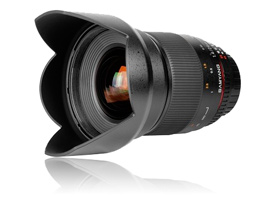
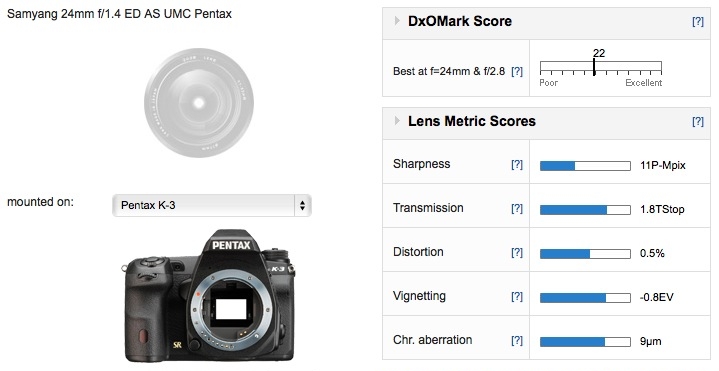
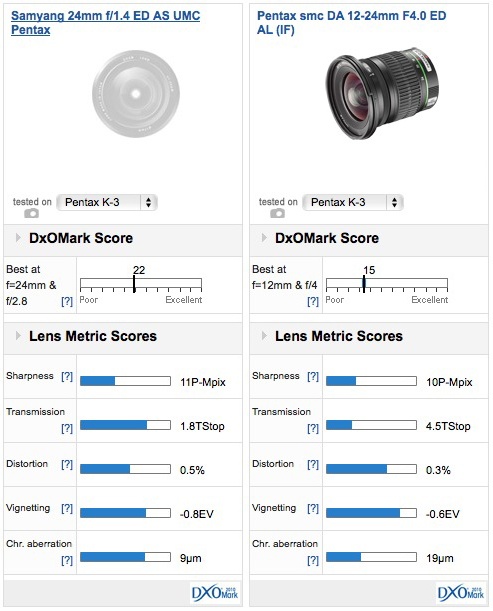
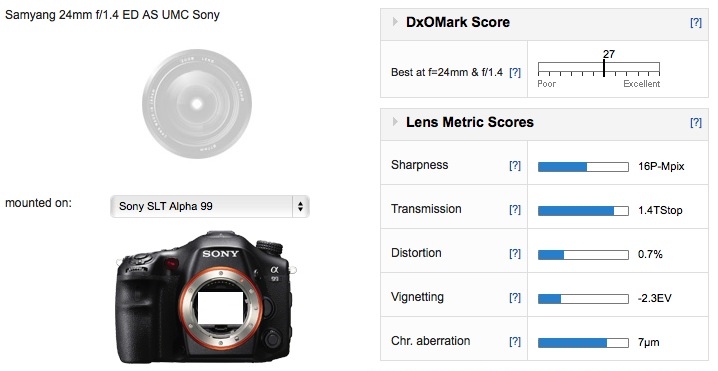
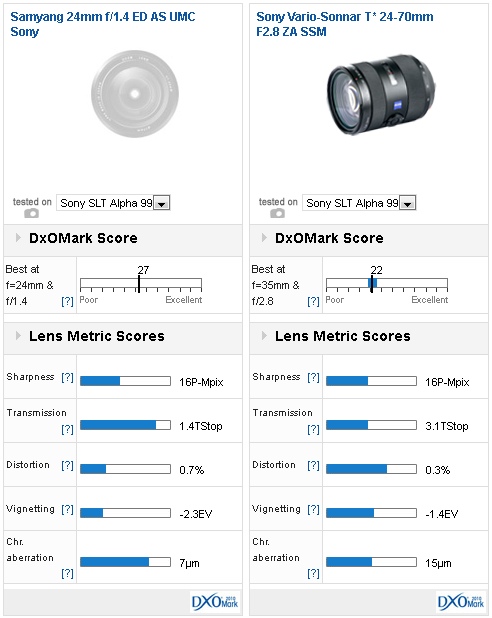
DXOMARK encourages its readers to share comments on the articles. To read or post comments, Disqus cookies are required. Change your Cookies Preferences and read more about our Comment Policy.